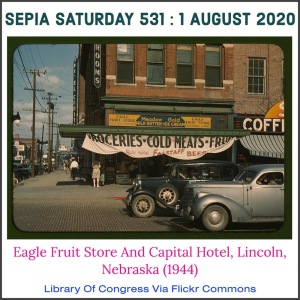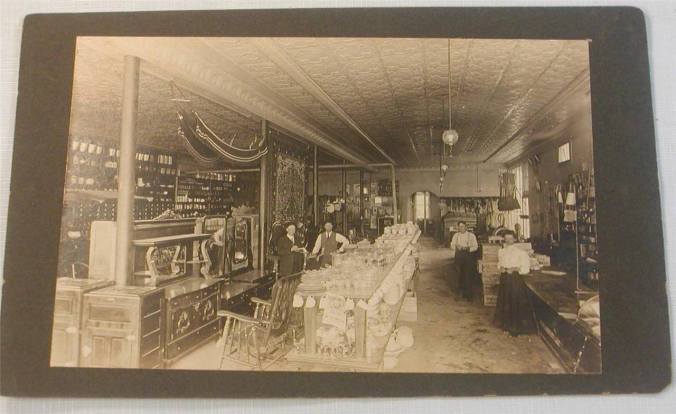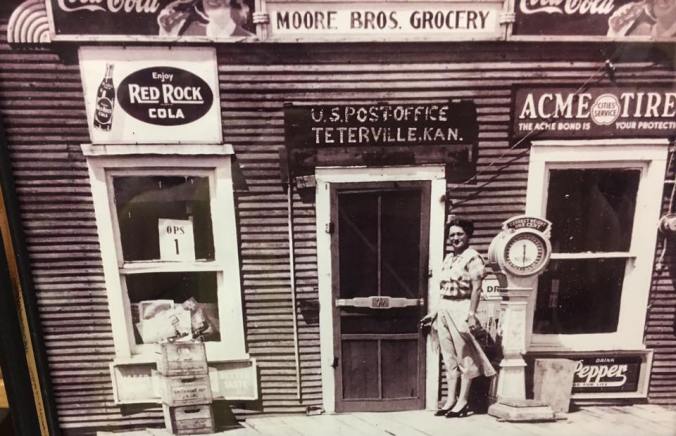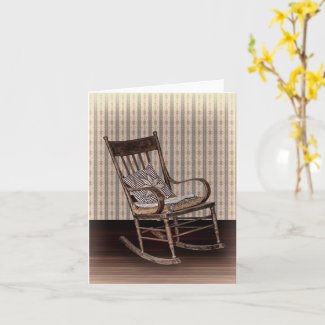Time for another photo match-up. Actually, the example photo showing a vintage street scene is in color, not the usual sepia ones that Sepia Saturday shares. That gives me more options to find a similar scene in our family photo stash. Let’s see what I find.

Sepia Saturday Theme Image, Lincoln, Nebraska, in Colour
First I found an old grocery store in Tyro, Kansas. My Vining and McGhee branches of the family lived there, as did some of the Babcocks and the Towers. This photo was kindly lent to me by Jack Irwin who is related to some of the founders of Tyro. His great-grandfather, Joseph Lenhart ran this store.


1907 – Inside the store in Tyro, Kansas.
My next find was the Moore Brothers Grocery in Teterville, Kansas. You can read more about this store and my mother’s memories of it in Just Shopping and Teterville Chat. This photo is at the history museum in Eureka, Kansas where they have quite a nice exhibit about Teterville.

Photo from the Eureka Museum of the Moore’s Store in Teterville, Kansas
I have one more story to share, but sadly, no photo of this grocery store. My grandfather, Ren Martin, had a grocery store in Reading, Kansas, after he retired.





























![poke2[1]](https://martinmcghee.files.wordpress.com/2020/07/poke21.jpg?w=676)


